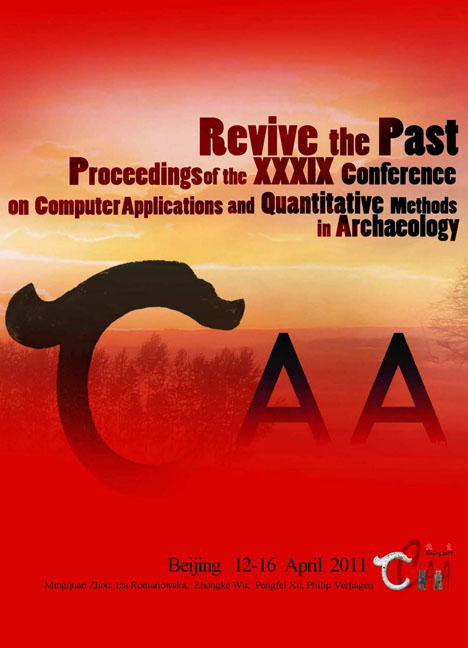 Revive the Past
Revive the Past Deepening in the 3D Modelling: Multisource Analysis of a Polychrome Ceramic Vessel Through the Integration of Thermal and Hyperspectral Information
Published online by Cambridge University Press: 23 June 2021
Summary
Abstract:
The objective in the proposed paper is to give the process a particular multi-disciplinary perspective. Using the 3-dimensional models obtained from 3D laser scanners as a starting point, the information is analysed and thermal and hyperspectral data are incorporated. Reality, understood as a set of surfaces, now has n-dimensions available, n being the number of bands with information on the same study element. This makes it possible to use the prospecting option in search of the information underlying the visible features and thus proceeding one step beyond traditional 3D modelling. Although artefacts are usually graphically documented in drawings and photographs, we decided to combine data from different thermal and hyperspectral 3D modelling sources in a digital treatment. In this paper we present the application of the proposed methodology to a ceramic piece consisting of a polychrome ceramic vessel from the Nazca civilisation of Peru, measuring 20cm high and 15cm wide and decorated with geometrical patterns, describing data collection and the previous first analyses.
Key Words: Hyperspectral Remote Sensing, Thermal Images, 3D Modelling, Short Range Photogrammetry and Laser Scanner
Introduction
Our first project on airborne multispectral remote sensing areas applied to archaeology was at the Recópolis site and the surrounding area. The Visigothic Recópolis site dates from 350- 450 AD and is located in Guadalajara, Spain. The aim of this first experience was to provide high spectral and spatial resolution images to support the archaeological study. The images acquired were used to make the preliminary site cartography, extract current land cover and to test the detection and/or confirmation models of possible buried archaeological structures.
The area of interest was surveyed from the air in July and November 2002, including the archaeological site and a nearby Arab fortress, operating simultaneously with two airborne remote sensing instruments, a multispectral scanner Daedalus 1268 and a digital AMDC camera equipped with a (GPS/IMU) positioning and orientation system.
Data processing techniques were used to retrieve information from the remote sensing data. The fused images were used for a statistical classification using the standard ISODATA clustering algorithm.
The AMDC images processed with the Sobel filter revealed some patterns which were likely to represent buried structures (Fig. 1).
- Type
- Chapter
- Information
- Revive the PastProceedings of the 39th Conference of Computer Applications and Quantitative Methods in Archaeology, pp. 116 - 124Publisher: Amsterdam University PressPrint publication year: 2012
